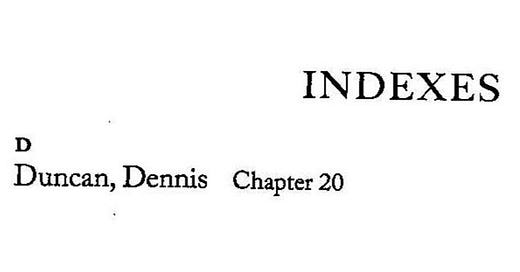Introduction
These may seem rather esoteric topics, but once you delve into them they are quite fascinating. What we think of as a book came about piecemeal as elements were added to it over the centuries. As for the index, which we probably take for granted, it could be and often was used as a means of “getting at” someone!
I hope you enjoy reading about…
Keep reading with a 7-day free trial
Subscribe to Eclecticism: Reflections on literature, writing and life to keep reading this post and get 7 days of free access to the full post archives.



